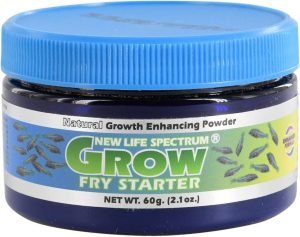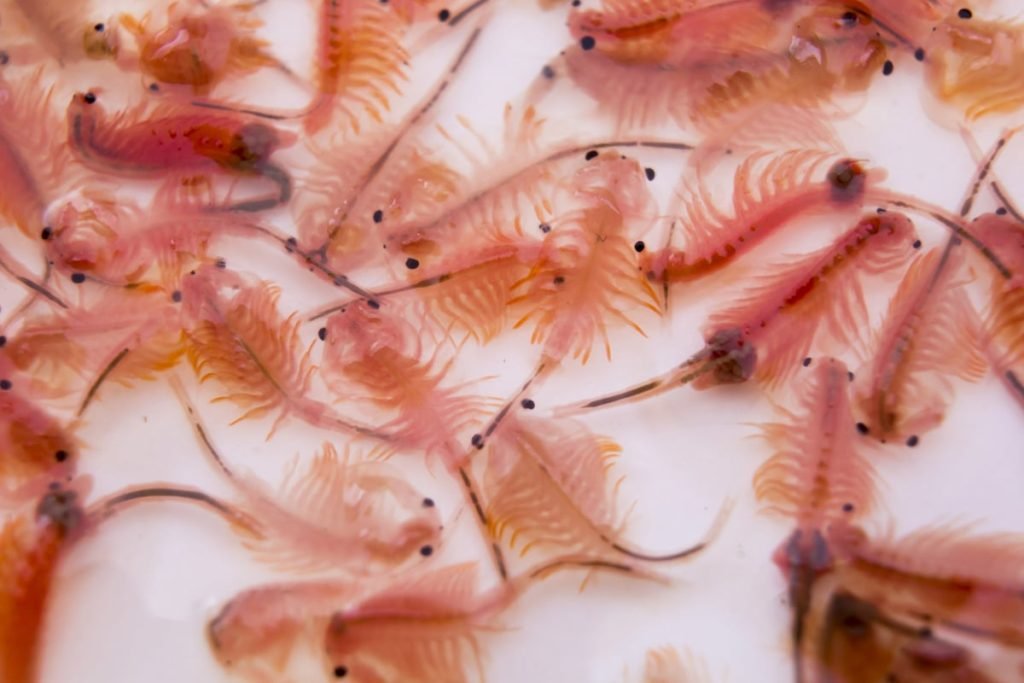How To Make Guppy Fry Grow Faster
Breeder's Years of Experience Taught Me These Growth Hacks
You hate long intros and so do I.
You have a tank full of fry- or maybe you’re planning on it. You’re probably hoping to breed guppies for money, but that’s a different story.
So how do you make guppy fry grow faster? Learn from my mistakes and let’s get them growing.
TL;DR Version
How To Make Guppy Fry Grow Faster
When it comes to making your guppy fry grow faster it boils down to 2 things:
Tank conditions and nutrition.
Keep their tank water pristine by changing it at least twice a week, keeping it at a constant, slightly warmer temperature (80F), and providing them with ample hiding spaces to reduce stress.
Feed them every 2-2.5 hours. Yes, it’s a pain. That is the biggest hack no one is talking about. Feed them fry food in combination with live food, just keep it frequent.
How To Make Fry Guppies Grow Faster With The Right Nutrition
When I first started breeding guppies I thought that I had to feed them a lot.
And I was right, but the “a lot” wasn’t a lot of food, but rather feeding them frequently.
My fry wasn’t growing as fast, but instead, my water was getting murky quickly.
Can you imagine it? I was spending more money (on food) just so I could spend more of my time (cleaning the tank) to get no result.
Well, luckily for you- you don’t have to.
Grow Guppy Fry Faster With The Right Food
While feeding your fry often will give you a better result than simply giving them a lot of food, you still need to feed them good food.
There are a couple of options of food you can feed them- whether it’s commercial guppy fry food or live food.
Commercial Guppy Food

I’ll be frank with you- I don’t really believe there’s a big difference between adult food and fry formula.
But what is important is that fry food is virtually powder- which makes it possible for your fry to consume.
This is definitely a necessary tool for your arsenal. Feeding your fry is very simple with commercial food and doesn’t require any prep.
Live Food

I’m not going to waste your time with a big introduction about brine shrimp– if you made it this far you already know about it.
You probably already know that brine shrimp needs to be prepared, and later on can be frozen for reuse.
I would run my fry on a mixed diet of commercial food and brine shrimp.
You can use daphnia or vinegar eels instead of brine shrimp. They are a lot more gross to prepare and I couldn’t tell a difference in the growth rate
Feeding Schedule: Feed Your Fry Often To Make Them Grow Faster
The unspoken secret to making your guppy fry grow faster is to feed them very frequently.
They’ll need to eat about four to six times a day, in about 2 to 2.5-hour increments.
Here’s what their feeding schedule can look like:
Morning
Newly hatched baby brine shrimp or finely powdered commercial fry food. Feed small amounts to ensure they consume it within a few minutes.
Mid-Morning
A mixture of crushed flakes or finely crushed pellets. This helps introduce solid foods and promotes their transition to a varied diet.
Afternoon
Finely powdered or crushed commercial fry food. This provides a balanced nutritional source for their growth and development.
Late Afternoon
Introduce freshly hatched baby brine shrimp or micro worms. These live foods are highly nutritious and encourage natural feeding behaviors.
Evening
Repeat the feeding of powdered or crushed commercial fry food. Ensure the portion size is appropriate for their age and size.
I’ll be Captain Obvious here and let you know you need to adjust the portion sizes accordingly to avoid overfeeding.
As they grow, you’ll be able to gradually incorporate more solid foods into their diet.
How To Keep Your Tank So Your Fry Grows Faster
Maintain Water Quality For Fast Growth
Clean and well-maintained water is crucial for the growth and overall health of baby guppies.
Ammonia and nitrite levels should be kept at zero.
These compounds can be highly toxic to fry.
I’ll assume you placed them into a cycled tank, and that you maintain the filter regularly by making sure the biofilter is usable.
The other thing you can do is frequent water changes. About twice a week with a 50% water change. Remember to match the temperature of the water you put in the tank.
Water Temps Matter Too
I always liked to bump my water up to 80 to help fry grow faster.
As long as you keep it constant, you will be ok, though. You may need to adjust your thermometer or get one with an adjustable temperature.
Temps are the easy part- just remember to match the temperature by pre-heating the water when you’re doing a water change.
Give Them Space
Baby guppies require ample space to grow and swim freely.
Avoid overcrowding the tank, as it can lead to stress, poor growth, and increased competition for food. Provide a spacious environment that allows the fry to move and explore comfortably.
If you plan on selling your guppies, you’ll want to transfer them into a breeding tank so they can develop over the next 8 weeks.
It helps distribute food particles evenly throughout the tank, ensuring all the fry have access to nourishment.
Consider adding a gentle air stone or adjusting the flow rate of the filter to create a gentle current that encourages movement and active feeding.
Provide Ample Hiding Places
Baby guppies need hiding spots to feel secure and reduce stress levels.
Dense vegetation, floating plants, or mesh breeding traps can serve as excellent hiding places for the fry.
These hiding spots not only provide a sense of security Even though they are in a separate tank from the adults.
While we’re on that topic, your baby guppies need to be in a separate tank for at least a couple of weeks after birth. If you leave them in the tank with the adults then there is a very high chance that the adults will consume the baby guppies.
Monitor And Maintenance
Keep a close eye on the fry’s growth and overall health, and regularly monitor their behavior, appetite, and appearance.
Look out for any signs of stress, diseases, or deformities.
these may come into life in the form of guppies spending more time in the corner of the tank, breathing heavily or having physical injuries like swollen gills.
You’ll need to address any issues that arise, such as poor growth or abnormal behavior, by adjusting their diet, water conditions, or seeking advice from experienced aquarists or veterinarians.
